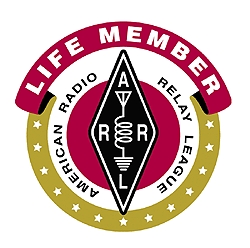-
Recent Posts
Archives
- April 2024
- March 2024
- February 2024
- January 2024
- December 2023
- November 2023
- October 2023
- September 2023
- August 2023
- July 2023
- June 2023
- May 2023
- April 2023
- March 2023
- February 2023
- January 2023
- December 2022
- November 2022
- October 2022
- September 2022
- August 2022
- July 2022
- June 2022
- May 2022
- April 2022
- March 2022
- February 2022
- January 2022
- December 2021
- November 2021
- October 2021
- September 2021
- August 2021
- July 2021
- June 2021
- May 2021
- April 2021
- March 2021
- February 2021
- January 2021
- December 2020
- November 2020
- October 2020
- September 2020
- August 2020
- July 2020
- June 2020
- May 2020
- April 2020
- March 2020
- February 2020
- January 2020
- December 2019
- November 2019
- October 2019
- September 2019
- August 2019
- July 2019
- June 2019
- May 2019
- April 2019
- March 2019
- February 2019
- January 2019
- December 2018
- November 2018
- October 2018
- September 2018
- August 2018
- July 2018
- June 2018
- May 2018
- April 2018
- March 2018
- February 2018
- January 2018
- December 2017
- November 2017
- October 2017
- September 2017
- August 2017
- July 2017
- June 2017
- May 2017
- April 2017
- March 2017
- February 2017
- January 2017
- December 2016
- November 2016
- October 2016
- September 2016
- August 2016
- July 2016
- June 2016
- May 2016
- April 2016
- March 2016
- February 2016
- January 2016
- December 2015
- November 2015
- October 2015
- September 2015
- August 2015
- July 2015
- June 2015
- May 2015
- April 2015
- March 2015
- February 2015
- January 2015
- December 2014
- November 2014
- October 2014
- September 2014
- August 2014
- July 2014
- June 2014
- May 2014
- April 2014
- February 2014
- January 2014
- December 2013
- November 2013
- October 2013
- September 2013
- August 2013
- July 2013
- June 2013
- May 2013
- April 2013
- March 2013
- February 2013
- January 2013
- December 2012
- November 2012
- October 2012
- September 2012
- August 2012
- July 2012
- June 2012
- May 2012
- April 2012
- March 2012
- February 2012
- January 2012
- December 2011
- November 2011
- September 2011
- August 2011
- July 2011
- June 2011
- May 2011
- April 2011
- March 2011
Categories
- 160-Meters
- 3D Printing
- 6-Meters
- Activation
- Alternative Power
- AMBE3000
- AMSAT
- Antennas
- AO-7
- AO-73
- AO-85
- AO-91
- AO-92
- AO-95
- APRS
- Arduino
- ARISS
- Armed Forces Day
- ARRL
- Awards
- Battery
- Buster
- BY70-1
- CAS-4A
- CAS-4B
- CF31
- Computers
- Contests
- COVID-19
- CW
- CW Academy
- CWops
- CWT
- Cycle 25
- D-Star
- Digital Mode
- DJ-MD5
- DMR
- DX
- DXLabs
- ECOMM
- Education
- EU2000i
- Field Day
- FlexRadio
- FMT
- FO-29
- FoxTelem
- From the OM
- FT-4
- FT-70D
- FT4
- FT8
- FTDX-101MP
- FUSION
- Gear
- Goals
- Grid Chase
- HamStick
- History
- HRD
- Hunter
- HuskySat-1
- IC-7300
- IC-9100
- IC-9700
- IGC
- ILLW
- Instruction
- IOTA
- ISS
- JS8Call
- JT65
- JT65A-HF
- JT9
- K1
- K1EL
- K4D
- KH1
- LiFePO4
- LotW
- Mapping
- Morse Code
- MSHV
- N1MM
- NPOTA
- NTP
- NTP Clock
- NXDN
- Operating
- P25
- Packet
- Paddle
- PiStar
- Pixie
- Portable
- POTA
- Presentations
- Projects
- Propagation
- Public Service
- QCX-mini
- QRP
- QRP Labs
- QSL
- Raspberry Pi
- RDF
- RMS
- RS-44
- Satellite
- SatPC32
- Sightless Hams
- SKYWARN
- SO-50
- Solar Cycles
- Solar Power
- Soldering
- Sound
- Sporadic-E
- Testing
- TH-D74A
- Time
- TM-D710GA
- Toughbook
- Tracker
- Training
- UKUBE-1
- Uncategorized
- USIslands
- VARA_FM
- VARA_HF
- Volunteer Monitor
- VUCC
- WAS
- Weather
- WFD
- Win10
- WinKeyer
- Winlink
- WSJT-X
- XW-2A
- XW-2B
- XW-2C
- XW-2D
- XW-2F
- YSF
- ZumSpot
Meta
Monthly Archives: March 2017
Using a Diplexer (Duplexer) as a 2-meter LPF
First off, to be clear, I’m talking about a Diplexer, the small device that will fit in your pocket and costs < $60, that is used to combine 2-meter and 70-cm rigs to use a single antenna feed-line. However both … Continue reading
KA1QYP Half Pint QRP Transceiver Passes FCC
In our continuing quest to evaluate the output purity of various QRP kits, Willy W1LY constructed a Bill KA1QYP Half Pint Kit. The assembled kit produced a solid 600 mW output and was one of the cleanest radios we’ve seen. The … Continue reading
Posted in Projects, QRP
Leave a comment
Pixie with 5-pole Axial Filter Passes
Willy, W1LY, decided to try using the standard unshielded 1 uH axial inductor that the Pixie uses for it’s current 3-pole filter (C5=47o pf, L2=1 uH, C6=470 pF) as the starting point for a 5-pole filter that could easily fit … Continue reading
Elsie Plot of QRP-Labs 7-pole 40-m LPF
This is the schematic of the 7-pole LPF used in the QRP Labs 40-meter LPF: The plot from Elsie 2.77 for the above filter looks like this: The actual SA response curve looks like this: The curves are remarkably similar. … Continue reading
Posted in Pixie, Projects, QRP
Leave a comment
A “Better” QRP Transceiver?
NCRC had several reasons for building the Pixie as a club project, and getting it on the air is probably at the bottom of the list. Fixing flaws in the Pixie design provides learning opportunities. But by the time you … Continue reading
Posted in Projects, QRP
Leave a comment
Pixie Perfection
As has been noted in several posts, the stock Pixie 3-pole filter is hopelessly inadequate to suppress harmonics. A typical Pixie will have a 2nd Harmonic that is only about -21 dB down from the carrier. An external 5-pole filter … Continue reading
Posted in Pixie, Projects, QRP
Leave a comment
What’s wrong with the serial port on the Raspberry Pi 3?
The Raspberry Pi 3 added all sorts of features to the Pi, including a much faster speed adjustable CPU, built-in WiFi, and Bluetooth interfaces. Some of the hardware interfaces on the Pi continue to have limited functionality. Such is the … Continue reading
Posted in Raspberry Pi
Leave a comment








